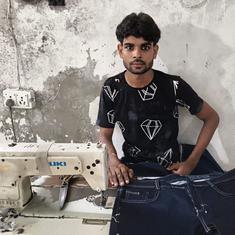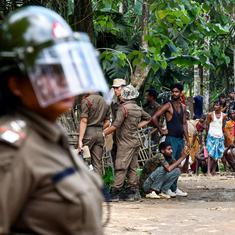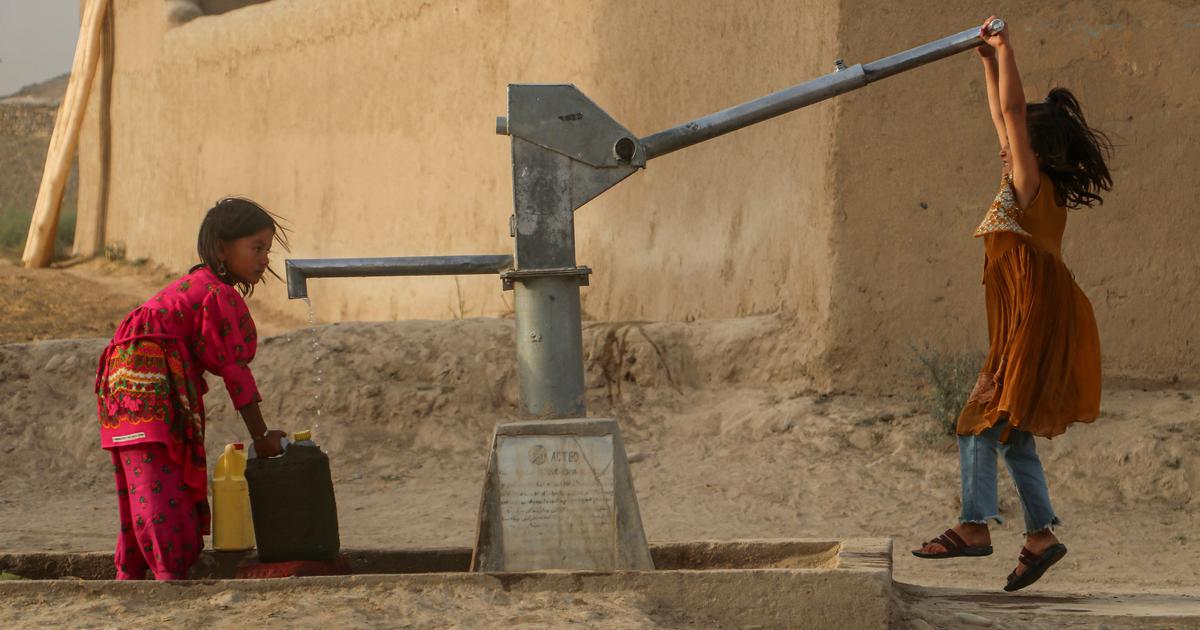In drought-hit Bundelkhand, girls wake at dawn to collect water before the heat becomes unbearable. In flood-scarred Sindh, displaced families live for months in makeshift camps, where security is fragile and futures uncertain. Along the saline coastlines of Bangladesh, as rising seas encroach on land and livelihoods, girls quietly disappear from schools, often never to return.
Across South Asia, early and forced marriage is taking on new dimensions. While often explained through the lens of tradition or poverty, the practice is increasingly shaped by a force largely absent from most climate adaptation frameworks: the accelerating environmental crisis.
Globally, the scale of this intersection is growing. A 2023 report by Save the Children found that nearly two-thirds of all child marriages already take place in regions facing above-average climate risk.
Nearly 30 million girls today live in countries classified as climate-and-child-marriage hotspots. By 2050, that figure is projected to rise to almost 40 million, an increase of 33%. Without intervention, environmental disruption may not just threaten girls’ futures – it will predetermine them.
Nowhere is this more visible than in South Asia, a region home to one-third of the world’s child brides and more than 750 million people affected by climate disasters in the past two decades. Here, early marriage is not only the product of social norms but of structural breakdowns: collapsed education systems, deepening gendered labour, vanishing safety nets and the long shadows of poverty and caste inequality.
Climate change is not creating these conditions, but it is making each of them worse.
Education, often cited as the most effective deterrent to child marriage, is among the first systems to falter during climate shocks. In cyclone-affected regions of Bangladesh and flood-hit districts of Bihar, schools double as shelters, teachers are displaced and girls are pulled out to help at home. With classrooms closed and uncertainty ahead, many never return.
In these moments, marriage becomes less about culture and more about perceived protection.
The same logic extends to labour. Girls in rural South Asia shoulder the lion’s share of unpaid domestic work, from caregiving and cleaning to collecting increasingly scarce water and firewood. During periods of drought or post-disaster recovery, these demands spike. In places like Marathwada, Maharashtra, and central Nepal, families have reported marrying girls in their early teens not out of custom, but to redistribute labour and reduce economic pressure.
Migration, especially seasonal and informal, adds another layer. In Maharashtra’s sugarcane belt or the brick kiln zones of northern India, contractors prefer to hire couples. As a result, families often marry off daughters before migration season begins. In these cases, marriage becomes a passport to mobility, tied directly to survival.
The legal systems meant to protect girls are often weakest where they are needed most. Most South Asian countries set 18 as the minimum age of marriage for girls, but laws are riddled with exceptions and enforcement is patchy. In Bangladesh, a 2017 amendment introduced a loophole allowing marriage under 18 in “special circumstances”.
In India, contradictions between civil and religious laws have allowed child marriages to continue with local sanction. In the aftermath of a disaster, when documents are lost and institutions are overwhelmed, these protections become almost meaningless.
As always, it is the most marginalised – Dalits, Adivasis, members of indigenous communities and displaced populations – who are most affected. After Nepal’s 2015 earthquake, child marriage reportedly spiked in Dalit and Janajati communities where state relief was slow.
In parts of Assam and Odisha, where floods recur annually, fears of trafficking or violence during displacement often push families to marry daughters early as a “preventive” measure.
Despite mounting evidence, most national climate adaptation plans in the region make little to no mention of child marriage. Resilience is typically measured in megawatts restored, roads rebuilt or flood defences installed. Social systems, especially those that affect adolescent girls, are considered secondary.
But if girls are the first to drop out of school, the first to be married and the last to return to normalcy after a disaster, it is not a secondary concern. It is a frontline issue.
This is where Climate Brides, an open-source multimedia platform I run, steps in. Our work documents how climate change is intensifying the drivers of early and forced marriage in South Asia, not through abstract theory, but through regional voices, lived experience, and grounded research.
The Climate Brides thematic map, available in multiple regional languages, illustrates how reproductive health collapses in disaster-hit regions, how girls’ labour becomes invisible but indispensable, and how legal systems erode when climate stress strikes. Our podcast features activists, community organisers, academics, and frontline workers, connecting the dots between climate adaptation and adolescent girls’ rights.
These stories are not marginal. They are the mirror of a wider failure. Because early marriage is not just a tradition. It is a signal of risk, of absence, of policies that do not see girls as citizens in need of protection, let alone as agents of change.
What would it take to respond seriously? Start with continuity in education during and after crises. Invest in gender-responsive early warning systems. Provide conditional cash transfers, adolescent health access, and support for families that keep girls in school. More than anything, shift the frame – from seeing marriage as a private choice to understanding it as a public consequence of climate neglect and gendered governance.
If families are marrying off daughters because it is the only way to stay afloat, the failure is not theirs. It is ours. Awareness campaigns and legal reform cannot stand in for broken systems. Climate resilience must be redefined, not just in rebuilt houses or restored power lines, but in whether a girl returns to school after the storm.
In South Asia, where climate risks and gender inequalities are colliding with increasing intensity, child marriage is not a peripheral concern. It is a measure of how adaptation is working – and for whom. Because what happens to girls in climate-stressed communities is not just collateral damage. It is the crisis, in plain sight.
Reetika Revathy Subramanian is a Senior Research Associate at the School of Global Development, University of East Anglia.










